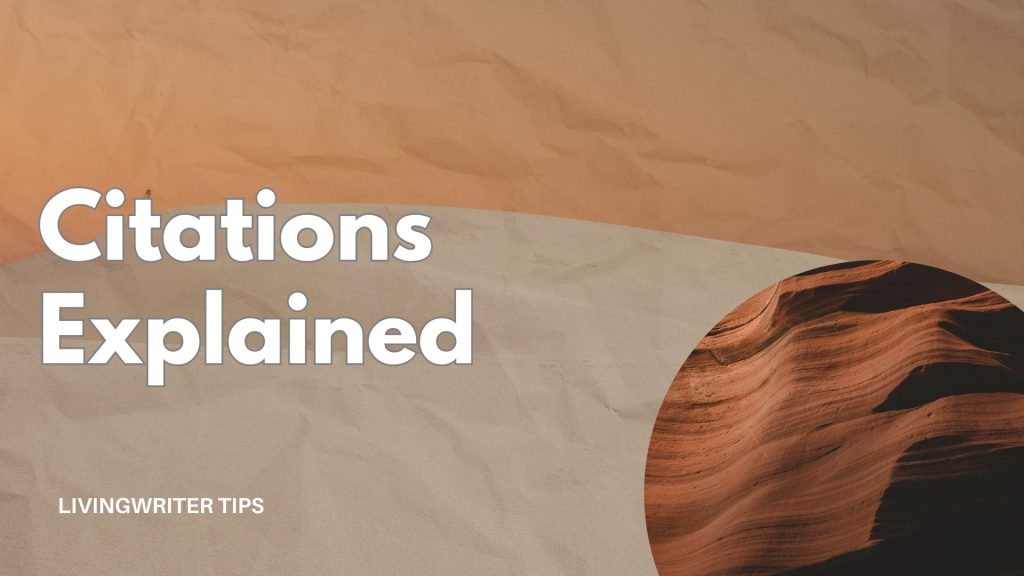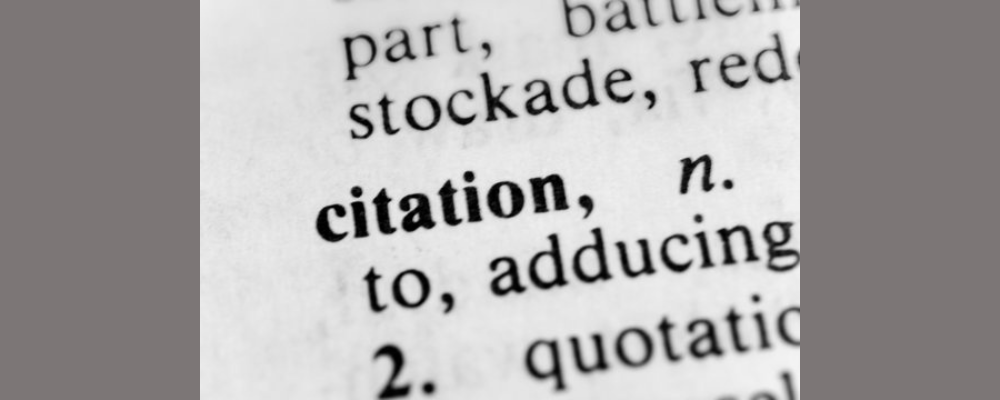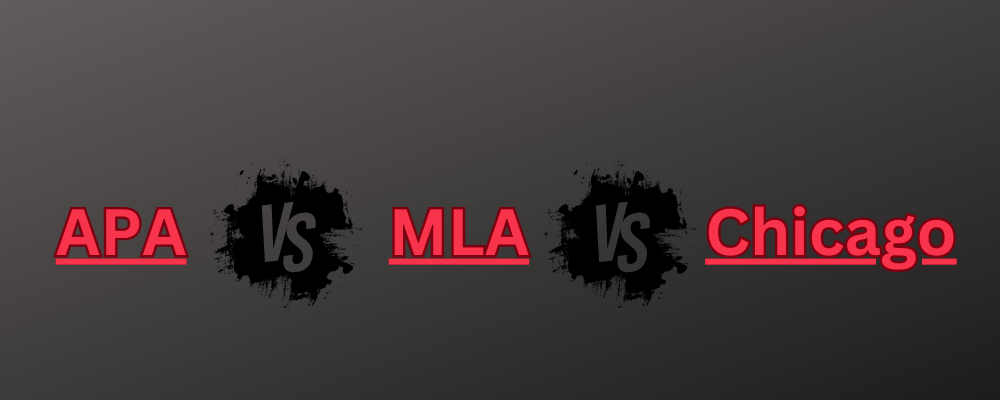How To Do Citations – MLA, APA, & Chicago

Citations are an essential part of academic writing and non-fiction, ensuring that you give proper credit to the original authors of your sources. While important, they can also be a cause for confusion for writers. How do you do citations? How are citations formatted? Today, I’ll cover everything you need to know about how to do citations.
Below, we’ll discuss when and how to use citations and how to choose the correct citation style for your work. We’ll cover in-text citations, creating a reference list, and addressing particular types of sources. I will also look at examples of MLA, APA, Chicago, and more, and finally address some frequently asked questions. So, without further ado, let’s get started.
Table of Contents
How To Do Citations

What is a Citation?
A citation is a reference to a source of information used in your research or writing. It typically includes details such as the author’s name, the title of the work, publication date, and page numbers. Citations are used to acknowledge the work of others and to guide readers to the original source.
For example, if you were citing a non-fiction book, it might look like this:
- Gladwell, M. (2008). Outliers: The Story of Success. Little, Brown and Company.
In this particular format (APA), the author’s last name is followed by the first initial. Then, the year the book was published, the title of the book, and finally, the publishing company. These citations provide enough information for readers to locate the original source and verify or continue research on the information used in your work.
What Are Citations For?
Now that we know what a citation is let’s look at why it’s important. Citations are vital to academic works and several non-fiction genres for several reasons. Proper citations of the works you reference help you to:
- Avoiding Plagiarism: By citing sources, you give credit to the original authors, thus avoiding plagiarism.
- Verifying Information: Citations allow readers to verify the information and follow up on your sources.
- Contributing to Scholarly Work: They show that you have engaged with existing research and contribute to the ongoing academic conversation.
When to Cite Sources?
So, when exactly should you be citing sources in your work? You should cite sources in the following circumstances:
- Direct Quotes: When you use the exact words from a source.
- Paraphrasing: When you rewrite the information from a source in your own words.
- Summarizing: When you provide a brief overview of the main points of a source.
- Using Data or Images: When you incorporate data, statistics, or images from other sources.
Choosing The Right Citation Style – APA, MLA, & Chicago

There are several major citation styles, each with its own rules and conventions. The choice of style often depends on the academic discipline or publication requirements. The table below provides a general overview of each (along with some less common ones).
| Style | Discipline | Example | YouTube Tutorial |
|---|---|---|---|
| APA | Social Sciences | (Smith, 2020, p. 15) | The Basics of Citing and Referencing in APA |
| MLA | Humanities | (Smith 15) | Introduction to Citation Styles: MLA |
| Chicago | History, Business, Fine Arts | (Smith 2020, 15) or footnotes/endnotes | How to cite in Chicago style |
| Harvard | Various | (Smith, 2020) | Citing and referencing using the Harvard Style |
| IEEE | Engineering, Computer Science | [1] Smith, J. (2020). Title of Smith’s source. [Publisher]. | IEEE Citation Style Tutorial |
| Vancouver | Medicine, Biological Sciences | [1] Smith J. Title of Smith’s source. Journal Name 2020; volume number(issue number): page numbers. | Citing and referencing in the Vancouver Style |
APA (American Psychological Association)
APA is ideal for research papers in social sciences (or other works) where the publication date is important. It focuses on the timeliness of the sources. APA is commonly used in social sciences, such as psychology, sociology, education, and business. It emphasizes the date of publication, which is vital in any field where information is frequently updated.
- APA Format Example: Author(s) name. (Year). Title of the work. Publisher.
MLA (Modern Language Association)
MLA is best used for humanities papers, especially those involving literary analysis. It emphasizes the author and the specific location within the text, which is crucial for detailed textual studies. MLA is often used in works on language and literature.
- MLA Format Example: Author(s). Title of the Work. Publisher, Year
Chicago
Chicago-style stations are suitable for history and the arts, allowing for comprehensive citation through footnotes/endnotes and a bibliography. The Author-Date system, similar to APA, is used in the sciences and social sciences.
It has two systems: Notes and Bibliography and Author-Date.
- Notes and Bibliography Format Example: Author(s). Title of the Work. Place of publication: Publisher, Year.
- Author-Date Format Example: Author(s). Year. Title of the Work. Place of publication: Publisher.
Different disciplines have preferred citation styles. And it’s not uncommon for journals and publishers to specify a required citation style. Once you choose a style, be consistent throughout your work. You can maintain consistency by adhering to the abovementioned rules for the chosen citation style.
For additional help, consider using some tools. For example, citation generators like Scribbr Citation Generator and reference management software can help maintain consistency. Finally, proofreading your content, where you double-check your citations for accuracy and consistency, is always a good idea.
IEEE (Institute of Electrical and Electronics Engineers)
The IEEE citation style is primarily used to reference engineering and computer science sources. It prioritizes clear and concise references for technical fields, allowing readers to find the source material efficiently.
You May Also Like: Best Apps For Writing – Top 5 Writing Software For 2024
A key characteristic of the IEEE style is using in-text citations with numbers in square brackets ([1]). These numbers correspond to a numbered reference list at the end of the document, where the full details of each source are provided.
- IEEE Example Format: Author(s). “Title of the article.” Publication Name, vol. number, pp. starting-ending page, year.
Vancouver (International Committee of Medical Journal Editors – ICMJE)
The Vancouver citation style is favored in medicine and biological sciences. Like IEEE, it emphasizes clear and concise referencing for medical and scientific publications. In-text citations are also denoted by numbers in square brackets ([1]), which again refer to a numbered reference list at the end of the document.
- Vancouver Example Format: Author(s). Title of article. Journal Name Year; volume number(issue number): page numbers.
How To Write In-Text Citations
In-text citations are like tiny signposts within your writing, guiding your readers to the sources that support your ideas. They ensure you give credit where it’s due and allow readers to explore the references that shaped your work.
Each citation style has its own format for in-text citations. These citations typically include the author’s name and the year of publication, but some styles may also require page numbers. Here’s a quick breakdown of some common styles:
- APA (American Psychological Association): (Author, Year, p. Page number)
- MLA (Modern Language Association): (Author, Page number)
- Chicago (Chicago Manual of Style): (Author, Year, Page number) (or footnotes/endnotes)
- Harvard: (Author, Year)
Where you place your in-text citations depends on how you’re using the source:
- Direct Quotes: Place the citation immediately after the closing quotation mark, before the punctuation.”This is a direct quote” (Smith, 2020, p. 15).
- Paraphrased Information: Place the citation at the end of the paraphrased sentence to indicate the source of the information. Smith (2020) suggests that this is an important consideration.
Handling Special Cases
Here are how you’ll handle some everyday situations that may arise when doing in-text citations, including citing multiple authors, citing without an author, and citing multiple sources simultaneously. Here is what you should know:
- Multiple Authors: Follow the specific citation style rules for sources with more than one author.
- APA: (Smith, Jones, & Brown, 2020)
- MLA: (Smith, Jones, and Brown 15)
- No Author: If there’s no author listed, use the title of the work or the first few words of the title in your in-text citation.
- APA: (“Title of the Work,” 2020)
- MLA: (“Title of the Work” 15)
- Multiple Sources: When referencing numerous sources within the same sentence, separate the citations with a semicolon. (Smith, 2020; Jones, 2019)
What Is A Reference List
Your reference list provides full details of all the sources you cited in your work. Think of it as a “Works Cited” section, allowing readers to locate and verify your information. Here’s what you typically include in a reference list entry (depending on the source type):
- Author(s): The name(s) of the author(s).
- Year: The publication year.
- Title: The title of the work (book, article, website, etc.).
- Source Information: Where the work was published (e.g., journal name, book publisher, website URL).
A reference list only includes sources you cited in your work. A bibliography, on the other hand, can include all sources you consulted, whether cited or not.
How To Cite Digital Content

As you encounter different source types (websites, videos, podcasts, etc.), there are specific ways to format them in your reference list. Many style guides offer online or print resources to help you with these formats, considering they don’t follow the general “author, year, title” format, and some sources require additional details.
Here’s a quick guide:
- Websites: Include the author (if available), date, title, website name, and URL
- APA: Smith, J. (2020). Title. Website Name. URL
- MLA: Smith, J. “Title.” Website Name, Year. URL
- Multimedia (YouTube, Podcasts): Include creator name (or username), date, title, platform (YouTube/Podcast name), and URL
- APA: Smith, J. [Username]. (2020). Title [Video/Audio podcast episode]. Platform. URL
- MLA: Smith, J. “Title.” Platform, uploaded by Username, Year. URL).
- Non-Traditional Sources (Interviews, Lectures): Include creator name, date, and a brief description
- APA: Smith, J. (2020). [Personal interview/Lecture notes]. Details
- MLA: Smith, J. “Title” [Details]. Year.
- Social Media Posts: Include author’s handle, date, post text, platform, and URL
- APA: Smith, J. [@username] (2020). Text of post [Tweet]. Twitter. URL
- MLA: Smith, J [@username]. “Text of post.” Twitter, Year. URL.
- Secondary Sources: If citing a source from another source, use the “cited in” format.
- APA: Smith, J. (2020) as cited in Jones, M. (2021)
- MLA: (qtd. in Jones 2021)).
FAQs Section

Q: How Do I Cite A Source With Multiple Authors?
A: When citing multiple authors in APA, list all authors for sources with up to 20 authors. For more than 20, list the first 19 followed by an ellipsis (…) and the last author’s name.
In MLA citations, list up to two authors. List the first author followed by “et al.”
- Example: Smith, John, and Mary Jones. or Smith, John, et al.
Q: What Should I Do if I Can’t Find All the Information For A Citation?
A: When you can’t find some of the info you’d usually provide for a given cite, provide as much information as possible. You can also note missing information with “n.d.” (no date) or “n.p.” (no publisher).
A missing author in APA or MLA can be left blank. For Chicago: use brackets “[Author not found]” or describe the work, e.g., “[Newspaper article on climate change].” Use brackets with a description for a missing title, e.g., “[Website about Phyrexian decks].”
Q: How Do I Cite a Source I Found in Another Source?
A: In APA style, you’d cite, for example, Smith (2020) in the text, followed by “as cited in” and then “Jones (2021).” This clarifies that you haven’t directly read Smith’s work. Your reference list would only include Jones (2021) since that’s the source you consulted.
MLA takes a slightly different approach. You’d mention Smith’s work indirectly within the text using the phrase “qtd. in” before citing Jones (2021). This achieves the same purpose as APA’s “as cited in” but uses a specific abbreviation for “quoted in.” However, MLA still doesn’t require you to include Smith’s work in your Works Cited list.
While citing secondary sources can be helpful, consulting the source whenever possible is generally preferred. This ensures you’re getting the most accurate and up-to-date information. However, if the original source is unavailable or obscure, citing secondary sources allows you to incorporate them ethically into your work.
Q: Can I Use Footnotes Instead of In-Text Citations?
A: Styles like APA and MLA rely heavily on in-text citations. These brief parenthetical references within your text point the reader toward a full list of references at the end of your work. It’s a streamlined system that keeps your text flowing.
Chicago style, however, offers more flexibility. It allows you to use footnotes or endnotes instead of in-text citations. Footnotes appear at the bottom of the page where the citation is mentioned. At the same time, endnotes are all grouped at the end of the document before the reference list (or bibliography in Chicago’s terminology).
This approach can be helpful when in-text citations might disrupt the reading experience, such as when you have many references or need to include additional commentary alongside the source information.
So, while APA and MLA keep things concise with in-text citations, Chicago lets you choose between in-text references or more detailed explanations provided through footnotes or endnotes. Ultimately, the best approach depends on the specific requirements of your project and your preferences for readability.
Q: What Is The Difference Between A Reference List And A Bibliography?
A: A reference list is a focused record of the sources you directly cited in your work. Each entry in this list corresponds to an in-text citation, providing the full source details for readers who want to delve deeper. Think of it as a curated selection of the most relevant references that support your arguments and ideas.
On the other hand, a bibliography is more comprehensive. It encompasses the sources you directly cited and any additional resources you consulted during your research, even if they didn’t make it into your final text. This can include books, articles, websites, or unpublished materials that provide background information or help shape your thinking.